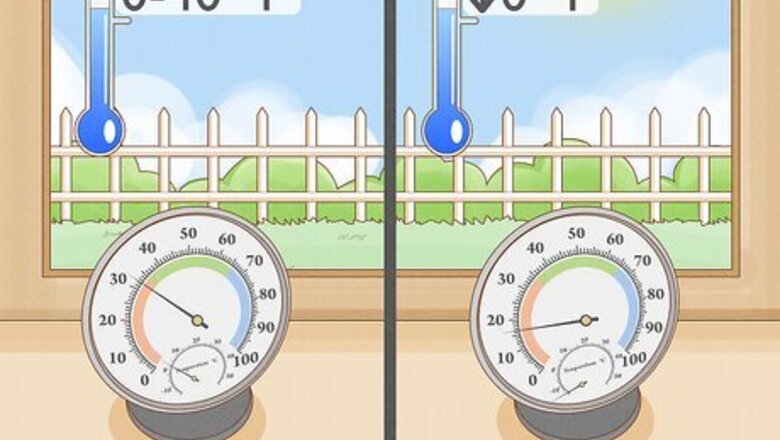
views
Reducing the Humidity Inside
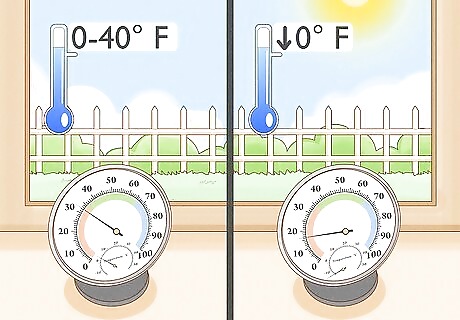
Install a hygrometer. A hygrometer is a device that measures moisture levels in the air. Since condensation forms when warm moisture in the air collects on a cold surface, such as a window, tracking the humidity level in your house can help you stop condensation. When the moisture levels in the house get too high, take steps to reduce the humidity. When the temperature outside is below 0 F (-18 C), keep the humidity in your house between 15 and 25 percent. When the temperature outside is between 0 and 40 F (-18 and 4 C), keep the humidity inside between 25 and 40 percent.
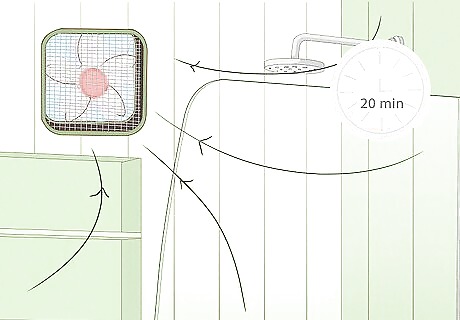
Use exhaust fans and vents throughout the house. One of the best ways to get humidity out of your house is to vent it outside through exhaust fans. Using exhaust fans is important in certain rooms and with certain appliances that produce moisture. Use bathroom vents and fans when you're bathing. Run them for at least 20 minutes after your shower. Use kitchen and stove fans when you're cooking. Run them for about 15 minutes after you finish cooking. Make sure your dryer vents to the outside for when you're doing laundry. A gas fireplace must have a chimney that vents outside, and you should always keep the damper open when you're having a fire in a wood burning fireplace.
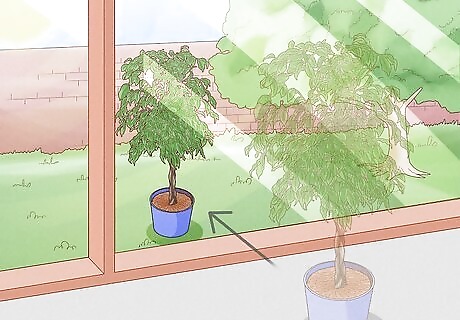
Take your plants outside. Indoor plants can be great in your home, but if you have trouble with condensation, you should keep them outside whenever possible. This is because plants produce moisture, so keeping them inside can exacerbate condensation issues. If you have a sun room that stays dry, you can also keep your plants there.
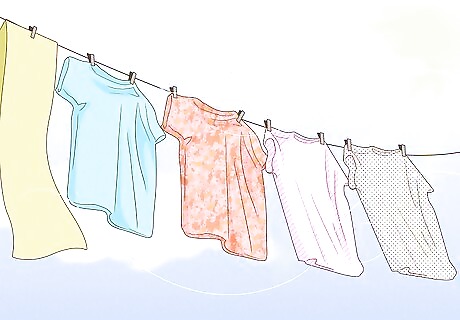
Line dry clothes outside. Another cause of excess moisture in the house is clothing that hasn’t been dried in a drier. If you must line dry your clothes, take them outside to prevent water from evaporating off the clothes and adding excess moisture to the air inside. If you must line dry clothes inside, keep them in a well-ventilated room, and open a door or window.
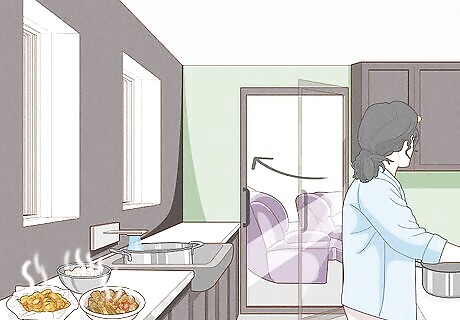
Close doors when bathing and cooking. Some of the most significant contributors to moisture in your home include showers/bathing and cooking. When you shower or bathe, close the door to the bathroom to keep steam and moisture from escaping into the rest of the house. When cooking, close doors to the kitchen to keep moisture contained. When you are cooking or bathing in a closed off room, open windows to help remove the moisture.
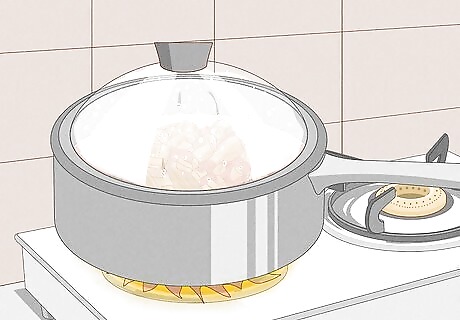
Use lids when cooking. Another great way to contain moisture when you're cooking is to use lids that will keep liquids inside the pans and pots. This is especially important when you're steaming and boiling food. When you do remove the lid from your dishes, do so in front of an open window, and make sure the exhaust vent is running.
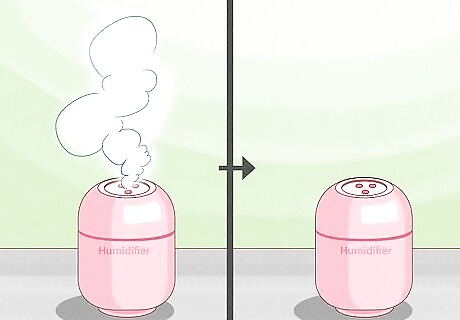
Turn off any humidifiers. Humidifiers are designed to add more moisture to the air in your house, so they will cause more condensation to form on your windows. When you're experiencing moisture problems, turn off all the humidifiers in your house, including ones that are attached to the furnace.
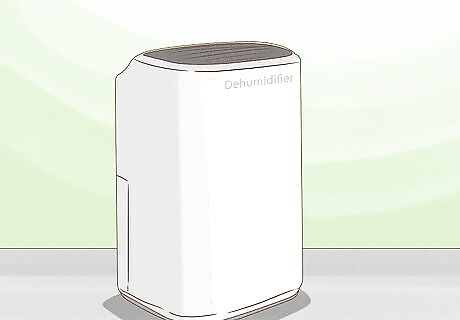
Use a dehumidifier. On the other hand, dehumidifiers are designed to remove moisture from the air, so these are ideal devices if your home is prone to condensation. You can either install a whole-home dehumidifier, or invest in a portable one that you can move around the house. Empty the drip pan or basin on the dehumidifier regularly to prevent that moisture from evaporating back into the air.
Managing the Temperature
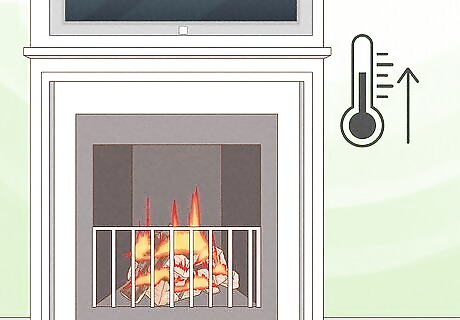
Keep your house at the right temperature. Managing the temperature inside your house is an important part of controlling condensation. Condensation can only form if there's a cold surface where the moisture can pool, so keeping windows and walls warm is essential. During the cooler months, use your furnace to increase the temperature, especially if humidity levels start to get too high. Use a hygrometer to keep and eye on the humidity levels in your house. If the humidity levels start to exceed 50 percent, take steps to lower the humidity and increase the temperature until the humidity drops below 50 percent.

Install weather stripping. This will prevent cold air from blowing in from outside and cooling walls and windows. Not only will weather stripping save you money on energy bills, but it will also stop condensation. Weather stripping is a protective strip that you can apply to doors and windows to prevent cold air from seeping in through joints and frames. You might also want to install a storm window, especially if your windows are made of a single pane of glass. That will create a barrier between the outside of your house and the inside, which will help lessen moisture on the window.
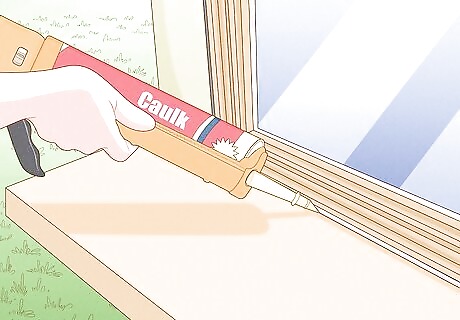
Seal cracks around windows and doors. Cracks and openings are another place where cold air can steal into your house. Around doors and windows, you can seal these with caulk to prevent walls and windows from cooling. To apply caulk, you'll need a caulking gun and a fresh bottle of caulk. After you apply the bead, smooth it down with a small knife or your finger to press the caulk into the hole.
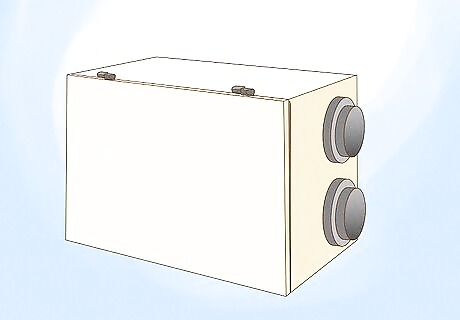
Install a heat recovery ventilator. This is a heat exchanger with a built-in ventilation fan. These devices are expensive (a couple thousand dollars), but they will help reduce your energy costs by preventing energy loss. And because this device will increase the temperature of your house, it will help you fight condensation.
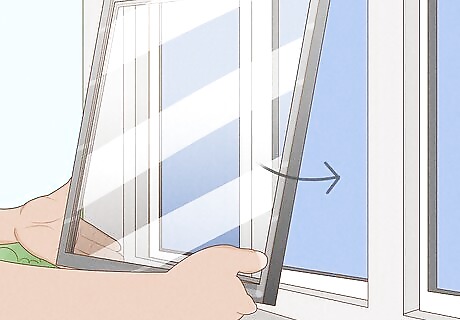
Install storm windows. Another way to prevent condensation is to stop the windows from getting cold, and you can do this by installing storm windows, or by replacing older single-pane windows with double or triple glazing. While replacing windows or installing storm windows may be expensive, it will also help to improve the energy efficiency of your home, so you'll save money on your power bills.
Improving Ventilation and Circulation
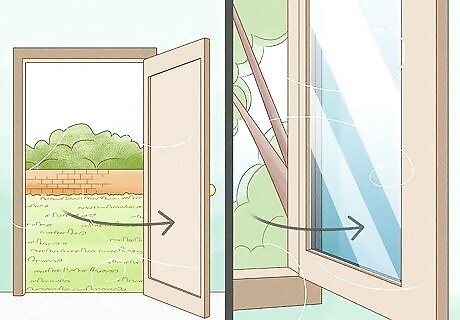
Open doors and windows. The final piece of the puzzle when it comes to reducing humidity in your home is improving ventilation and circulation. The easiest and cheapest way to improve the ventilation in your home is to open doors and windows when the weather permits. For the most effective ventilation, open windows on opposite sides of the same room to create a cross breeze.
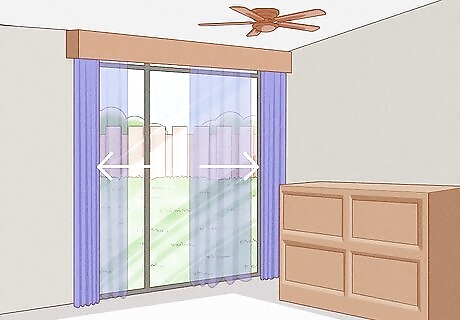
Open the drapes. Opening drapes and curtains will allow air to circulate against the windows, and this will dry out moisture on the windows and stop condensation from forming. The best time to open the windows and drapes is on sunny days, when the warmth and light from the sun will dry out moisture.
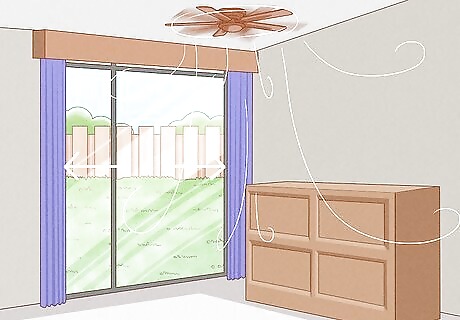
Use fans to move air around. Stand-up, oscillating, and ceiling fans are all great for circulating the air in your home. Not only will they help to reduce moisture, but they’ll also distribute hot air more evenly in the winter, and provide a cooling breeze in summer. In summer, ceiling fans should rotate in a counterclockwise direction. In winter, switch the fans so they rotate in a clockwise direction, and circulate heat more efficiently.




















Comments
0 comment